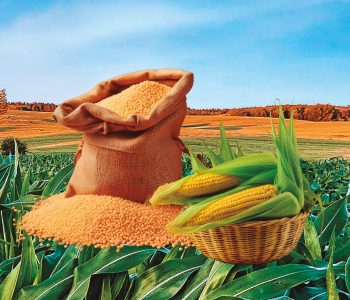Currently, animal feed expenses account for about 70% of production costs in livestock operations.
The costs of animal nutrition are primarily driven by the prices of corn and soybean meal, which are the main sources of energy and protein for animal diets, respectively.
Due to its accessibility and high nutritional value, corn is widely used in animal nutrition, with increasing use in human diets and biofuel production.
While soybean hulls are widely used in ruminant feed as a substitute for corn, soybean meal is considered the most traditional and complete protein ingredient for animal nutrition, suitable for both ruminants and non-ruminants.
However, when the prices of these base products are high, production costs become more burdensome, especially for poultry and swine diets.
| Therefore, this text aims to analyze the main criteria that should guide the choice of alternative feed ingredients to replace corn and soybean meal in animal nutrition. |
ALTERNATIVE FEED INGREDIENTS
[register] Alternative feed ingredients are defined as ingredients available in a given region that have a good nutritional profile, are well-accepted, have a lower market value compared to traditional feeds, and, most importantly, do not harm the health, well-being, and production of animals. In summary, a nutritious diet at an affordable cost.
Identifying regionally available feedstuffs has been an alternative route for producers seeking cheaper sources to enhance animal diets.
Thus, co-products generated in agro-industries have been acquired at more affordable prices, becoming financially viable alternatives. Besides improving producers’ profit margins, these products have significant nutritional quality.
| These ingredients are not important for the petroleum industry but have good nutritional characteristics that encourage their use in animal feed. |
Additionally, distillers will have by-products such as DDG (dried distillers grain) and WDG (wet distillers grain) available for sale, which are increasingly used in animal feed.
IMPACTS OF FEED COSTS
Corn and soybean meal are the main components of animal feed, with corn accounting for around 60% of the ingredients used.
As Brazil is the world’s largest soybean producer and the largest global corn exporter, any change in the volume of grains produced in the country directly impacts commodity prices both in the domestic and international markets.
These products undergo constant adjustments, and when increasing, they raise concerns for producers involved in animal farming. For poultry and swine farming, the economic difficulties related to these fluctuations are more significant since their diets heavily depend on grains.
UTILIZATION OF ALTERNATIVE FEED INGREDIENTS IN ANIMAL NUTRITION
Some limitations will be addressed throughout the text with the characterization of the feed and its utilization by animals.
It is worth noting that, for poultry and swine, we have national tables with the composition of feed and nutritional requirements, providing data for various feeds, both traditional and alternative, making it possible to balance more precise and cheaper diets with non-conventional ingredients.
Additionally, many other studies serve as references for nutritionists.
References available upon request. [/register]
